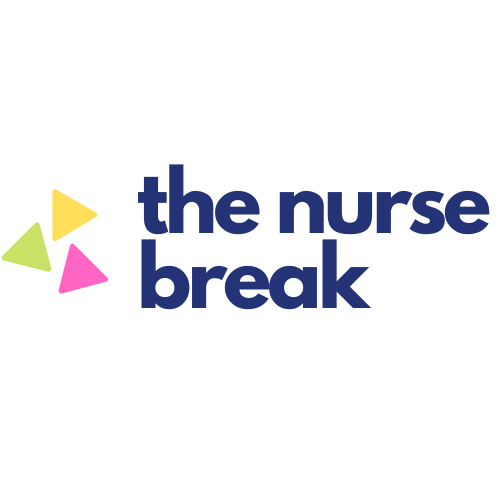Table of Contents
More from In Pursuit of Excellence here
Clinical Education – whose job is it anyway?
Clinical nurse educators and those that work within education teams (and may be known be other names such as clinical development nurses, or staff development nurses) are at the forefront of clinical education. As their title suggests, these roles carry a significant responsibility for the provision of education within the health system; however, there is an argument to be had that clinical education is, in fact, everyone’s responsibility.
This responsibility exists on a continuum from one’s own personal responsibility to ensure that they maintain current knowledge and skills in line with evidence, through to the requirement to provide supervision, support and teaching for those we work with.
I was chatting to a staff member recently who, after talking to a friend working in nursing elsewhere, commented on how lucky she felt working in a department that had access to regular education that helped her to feel engaged and inspired. It upsets me profoundly – given that I have dedicated much of my career to education – to think that access to quality clinical education might come down to ‘good luck’.
Observationally, I have found that high levels of engagement with education is one of those things that is almost invisible when it’s occurring, but so highly visible when it’s not. And perhaps that comes down to the impact it has on the capacity to provide high quality, safe, evidence-based care. When quality and safety are removed from the system it inevitably leads to more complaints, more adverse events and failure to rescue scenarios, and more legal claims. And all of those things attract attention – the unwanted kind.
Numerous pieces of literature support the need for ongoing professional development and the positive impact that education has on quality, safety and culture (IOM, 1999; Walton & Elliot; 2006; Wu & Busch, 2019; Mlambo et al, 2021). Therefore, it becomes essential that quality clinical education experiences are built into good organisational and departmental culture.
Our leaders and managers need to play a central role in promoting access to clinical education, whereby they set expectations, provide regular feedback, hold their teams accountable, and most importantly, model and support investment in the clinical education space. This becomes so much easier when organisations and executives value the contribution of education, protect time for it and set clear frameworks and strategy around it.
Employing clinical educators (and other education roles) is part of this. However, CNEs have multiple staff, and sometimes multiple departments, which they oversee, and time spent on facilitation and administration of education mean they are not always able to be present on the floor when you need them to be.
Our bedside clinicians consequently play an imperative role in helping to support clinical education and bridge this gap, as a great deal of clinical education happens informally, and opportunistically. In fact, a metasynthesis by Mlambo (2021), identifies that many nurses have a preference for informal teaching and identify that it is their interactions with colleagues where a lot of their most meaningful education occurs.
The Nursing & Midwifery Board of Australia’s (NMBA) Nursing Standards for both registered and enrolled nurses identifies the expectations for ongoing professional development of self and others (NMBA, 2016). For the registered nurse this involves reflective practice, regularly engaging in CPD activities, providing delegation and supervision to others, fostering a culture of safety and learning, and involvement in indirect clinical activities such as quality improvement, policy, research, and education (NMBA, 2016).
For the enrolled nurse, it’s utilising reflection, clinical supervision and evidence-based practice to develop self, and contributing to or supporting the professional development of others (NMBA, 2016).
Providing education is often not something we are taught to do in a deliberate and meaningful way as undergraduate health professionals. It is learned through our experiences, particularly when we are students and junior clinicians. It leads to an interesting question of what happens to those whose experiences are negative? How many of these people then go on to mirror those negative experiences, especially if they end up in an environment that either does not pull them up on the behaviour, or is inherently negative itself?
My own journey in clinical education began as a learner. I was lucky enough (there I go again with the lucky!) to be preceptored and mentored by people who were passionate about their specialty knowledge in critical care and loved sharing it. This meant I came into nursing with the understanding that this is what nurses could do. I watched how they did it, I saw how they made time for it and how they managed me when they didn’t.
I also know that it made me feel like a valued, respected and worthwhile member of the team, which steered me to a belief that it’s what nurses should do. To this day I will tell you that this primed my interest in clinical education and set the foundations for role modelling as one of my core professional values. All this leads me to believe that we should never under-estimate the impact educational investment has on people and their careers.
There has been a shift towards quality and safety within healthcare in recent years. Increasingly, health professional literature is recognising the need for inter-professional education between health disciplines to achieve this. Inter-professional education is defined as “occasions when two or more professionals learn with, from and about each other” (Zwarenstein et al., 1999) and has been linked to improved quality of care through collaboration, teamwork and improved communication, as well as increased job satisfaction among staff (Zanotti, Santor & Canova, 2015; Searle, 2008; Gauruya & Bar, 2018).
This means not only do we have a responsibility to support & contribute to education within our own profession, but also with the other health disciplines we work with.
When completing my recent health professional education studies I did so through a medical school within a multidisciplinary course. This meant there were nurses, doctors, psychologists and various other allied health professionals all studying together. I found this really helpful in terms of learning to understand the different ways that various disciplines are taught to approach their profession and what their thought and decision making processes are.
This has since impacted on my own approach to clinical education within our department and the facilitation of more cross-discipline learning through our inservice and simulation programs. But more than that, it means that I now have more insight and understanding into the fact that my approach (or indeed my profession’s approach) is not the only approach.
So to answer the question posed in the title, clinical education really is the job of all clinicians. This should then be then supported & modelled by management and leadership, and embedded in organisational strategy. And where we can also support inter-disciplinary education to learn with and from each other, this can only be a good thing, as it results in safer, more collaborative care for our patients and more professional understanding within our teams.
At the end of the day clinical education isn’t something we have to do because someone tells us too, or even because our registration relies on it. Participation in ongoing clinical education, as both a provider and receiver of, is the big picture that ensures all professionals are able to continue to provide best care to the patient lying in the bedspace before them on any given day.
References
NMBA (2016). Professional standards. APHRA. https://www.nursingmidwiferyboard.gov.au/Codes-Guidelines-Statements/Professional-standards.aspx
NMBA (2016). Enrolled nurse standards for practice. https://www.nursingmidwiferyboard.gov.au/Codes-Guidelines-Statements/Professional-standards/enrolled-nurse-standards-for-practice.aspx
NMBA (2016). Registered nurse standards for practice. APHRA. https://www.nursingmidwiferyboard.gov.au/codes-guidelines-statements/professional-standards/registered-nurse-standards-for-practice.aspx
Searle. J. (2008). Nurse practitioner candidates: shifting professional boundaries. Aust Emerg Nurs J, 11, 20-27
Zanotti. R., Sartor, G., & Canova, C. (2015). Effectiveness of interprofessional education by on-field training for medical students, with pre-post design. BMC Medical Education, 15. https://bmcmededuc.biomedcentral.com/articles/10.1186/s12909-015-0409-z
Zwarenstein, M., Atkins, J., Barr, H., Hammick, M., Koppel, I., & Reeves, S. (1999). A systematic reveiew of interprofessional education. Journal of Interprofessional Care, 13, 417-424
Guruya, S.Y., & Bar, H. (2018). The effectiveness of interprofessional education in healthcare: A systematic review and meta-analysis. The Kaohsiung Journal of Medical Sciences, 34(3), 160-165. https://www.sciencedirect.com/science/article/pii/S1607551X17306411
Wu, A.W. & Busch, I.M. (2019). Patient safety: A new basic science for professional education. Journal for Medical Education, 36(2) https://www.ncbi.nlm.nih.gov/pmc/articles/PMC6446473/
Mlambo, M., Silen, C., & McGrath, C. (2021). Lifelong learning and nurses’ continuing professional development, a metasynthesis of the literature. 20(62). https://bmcnurs.biomedcentral.com/articles/10.1186/s12912-021-00579-2





